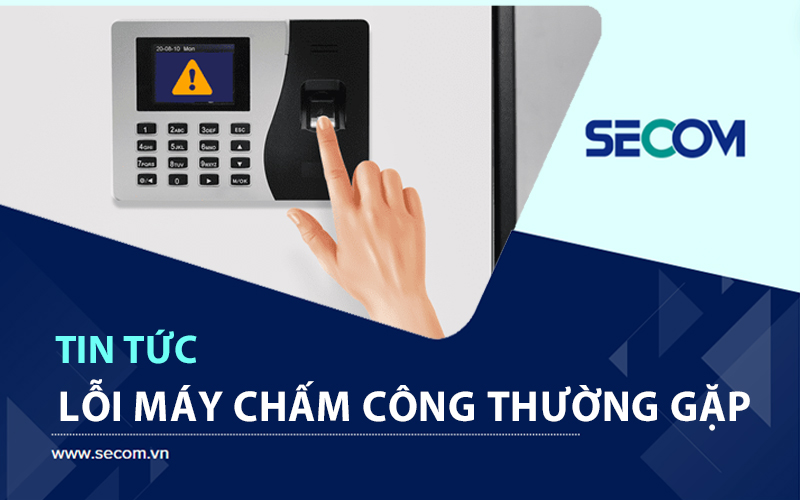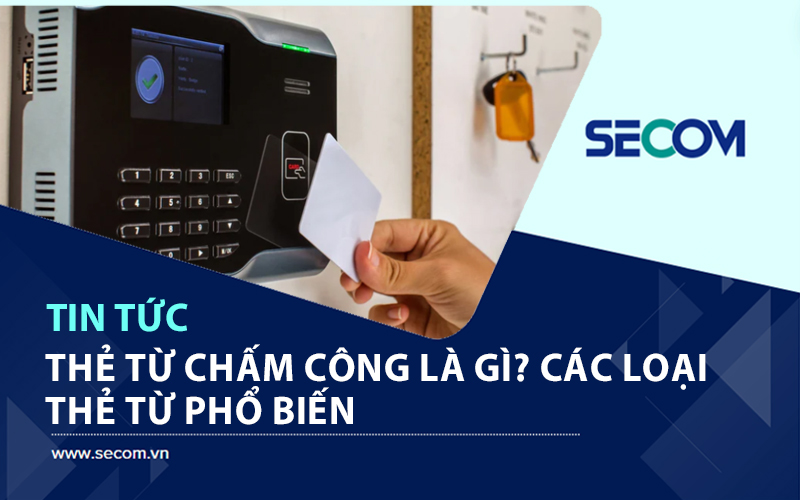- SECOM News
- Jul. 24, 2024
Fingerprint Recognition Technology and Its Practical Applications in 2024
To enhance security, many individuals and businesses are now seeking smarter and more modern devices, with fingerprint recognition technology leading the way. This technology allows users to unlock doors with a simple touch, providing greater safety and convenience compared to traditional unlocking methods. In this article, SECOM, a specialist in security solutions, delves into the advantages, disadvantages, operating principles, and applications of fingerprint recognition technology.
Overview of Fingerprint Recognition Technology
Compared to traditional devices like passwords or mechanical keys, fingerprint recognition technology is considered a more convenient and effective security solution. To help users better understand this smart security method, here are some basic details about fingerprint recognition technology:
What is Fingerprint Recognition Technology?
Fundamentally, this type of sensor is a biometric fingerprint technology from the United States used to identify and verify a person’s identity based on their unique fingerprint patterns. Each individual has a unique set of fingerprints, making it easy for homeowners to control access, protect personal information, and secure property effectively. Therefore, many businesses and individuals integrate fingerprint biometric technology into electronic devices such as smart locks, laptops, tablets, and mobile phones.
History of Fingerprint Recognition Technology
In reality, fingerprint recognition devices were used commercially in ancient Babylon and China. However, fingerprint recognition systems were not widely used until the late 19th and early 20th centuries for legal purposes. In 1924, the FBI began storing fingerprints of citizens for criminal investigations and identifying missing persons. Recognizing the potential of fingerprint sensors, the technology started to be used for business purposes in 1968 to secure company information and data. Today, fingerprint recognition technology has evolved significantly, incorporating sophisticated techniques to meet the security and privacy needs of users. As a result, this technology is now widely used in various fields, from finance and healthcare to door locks and access control systems.
How Does Fingerprint Recognition Technology Work?
Fingerprint recognition technology operates on the principle of biometric identification, collecting and analyzing a person’s fingerprints to determine their identity. Specifically, when a user places their finger on the device, it scans the fingerprint pattern and compares it to the stored fingerprint data. If there is a match, the system activates the lock, allowing the user to enter the premises or access the device data.
Key Advantages and Disadvantages of Fingerprint Recognition Technology
Currently, fingerprint sensor technology is a highly advanced and extremely useful security solution in the digital age. With precise biometric verification capabilities, fingerprint recognition technology offers superior safety and security compared to traditional methods.
Advantages
- High Security: Each person’s fingerprint is unique and difficult to replicate, so using biometric technology enhances security and prevents information and data theft for businesses and individuals.
- Multifunctional: Fingerprint sensors can be integrated and function well in various devices, from phones and laptops to door locks.
- Convenience: Biometric fingerprint technology allows users to unlock quickly with a simple touch, eliminating the need to remember complex passwords or worry about lost keys.
- Speed: Fingerprint verification on these systems takes only a few seconds, enabling users to access devices, data, or areas quickly and securely.
Disadvantages
- Sensitivity to Cold: Fingerprint sensors may react poorly in cold environments, as low temperatures can affect blood flow, altering the fingerprint.
- Changes in Fingerprints: If a user’s fingerprints change due to illness or injury, the sensor may not be able to unlock the system.
- Wet or Sweaty Hands: The device may not function well if the user’s hands are wet or excessively sweaty.
- Security Risks: In rare cases, malicious actors might exploit situations where the user is not conscious to use their fingerprint for unauthorized access.
Types of Fingerprint Recognition Technology
To provide suitable security solutions, manufacturers use various fingerprint scanning technologies. Currently, there are six popular and high-security fingerprint technologies on the market:
- Optical Fingerprint Recognition Technology: This sensor works by scanning a 2D image of the fingerprint when the user touches the device. The optical fingerprint scanner compares the collected fingerprint characteristics with the stored data and unlocks the door if there is a match. However, the security level is not very high due to its 2D nature, resulting in slower processing and lower accuracy.
- Capacitive Fingerprint Recognition Technology: This sensor collects fingerprint information using capacitors. Integrated with commercial algorithms, capacitive sensors offer faster recognition and higher accuracy than optical scanners, making them ideal for smart locks, safes, and control systems.
- Ultrasonic Fingerprint Recognition Technology: This is considered a high-end identification technology that provides excellent security. It operates by emitting ultrasonic waves and receiving the reflected waves from the finger, then analyzing the fingerprint features.
- Life Scan Fingerprint Recognition Technology: Common in smart locks, Life Scan technology offers high security and fast processing by scanning fingerprints in 3D space for clear and accurate recognition.
- FPC Fingerprint Technology (Sweden): This semiconductor-based technology combines capacitive, pressure, and thermal sensors for highly accurate live identity recognition.
- Biometric Scan Technology: One of the most modern and detailed fingerprint recognition technologies, it scans the entire finger and combines infrared scanning to read the user’s fingerprint code, with anti-counterfeiting and anti-replication features.
Notable Applications of Fingerprint Recognition Technology in Daily Life
With its many advantages and high security, fingerprint recognition technology is used not only for investigation and financial security but also in everyday life, providing unprecedented convenience and safety. Here are some of its prominent applications:
- Smartphones: Widely integrated into mobile phones and tablets, allowing users to quickly and safely access systems. Users can unlock devices, secure personal information, or verify transactions with a simple touch.
- Fingerprint Door Locks: These systems eliminate worries about lost keys or forgotten passwords, allowing easy access to buildings or offices and strict management of entry information, ensuring maximum security.
- Time Attendance Systems: Fingerprint-integrated time attendance systems help businesses manage personnel effectively, accurately track working hours, and eliminate buddy punching, creating a fair and transparent work environment.
- Access Control Systems: Allowing fingerprint-based unlocking and access control, these systems manage designated areas efficiently and quickly, enhancing security against external threats.
- Safety Safes: Fingerprint biometric technology integrated into safes ensures that only authorized individuals can access them, reducing the risk of theft and securing valuable documents and assets.
- National Defense Applications: Used to protect classified information and control access to critical areas, fingerprint sensors verify the identity of security personnel, creating a multi-layered security system for military secrets.
- Healthcare Applications: Used in the healthcare sector to verify patient identities and manage medical records, as well as to track and control medication distribution, ensuring patient safety.
Tips for Using Fingerprint Recognition Technology
To use fingerprint sensors accurately and effectively, individuals and businesses should consider the following factors:
- Regular Cleaning: Keep the fingerprint sensor area clean for optimal performance.
- Avoid Using Injured Fingers: Do not use fingers with open wounds as the fingerprint pattern may be disrupted.
- Handle Skin Conditions: Avoid using the sensor when your skin is cracked, sweaty, swollen, or infected to prevent recognition issues and further skin damage.
SECOM provides comprehensive information on fingerprint recognition technology and its operating principles. For high-quality, effective biometric fingerprint access control solutions, contact SECOM for prompt assistance.

























